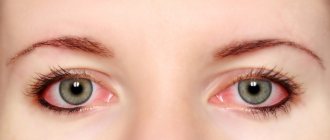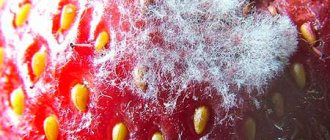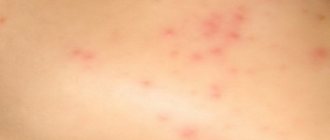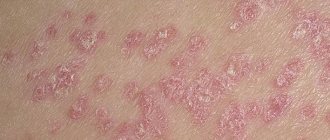Allergy to dust and mites, which are most often found there, is one of the most pressing human problems. No matter how clean your home is, the disease can manifest itself in any case, and at any time of the year. Allergies to house dust mites can occur even due to their small number. As a rule, this disease has a very bad effect on children.
In this case, the cleaning process for such people should not only be done every day using a simple damp cloth, but special means should be used to destroy these parasites. If you are allergic to house dust mites, a photo of which can be seen in the article, it is necessary to take preventive control measures.
But, unfortunately, ticks can only be seen under a microscope.
Everyone who suffers from this disease and the people around them, relatives, need to know how allergies to dust and mites affect the person himself, and what to do in this case. Of course, everyone should be aware of the methods of treating this disease.
What is house dust?
It consists of small microparticles, which include various waste products of people and pets.
Thus, house dust contains hairs, fabric from furniture, parts from clothing, animal hair, and dead skin epithelium. Any component may cause individual intolerance. The most common allergy is to house dust mites.
It is present wherever possible, and feeds on the skin epithelium. The favorite place of these parasites is bed linen, pillows and upholstery from a soft sofa or chair.
Brief characteristics of dust mites
Dust mites are considered to be parasites, although, from a scientific point of view, this is not so. Rather, he is our symbiont, living nearby and eating the remains of dead organic matter: hair, dandruff, sweat and fat secretions, exfoliated epithelium, pet fur. Moreover, these arachnids can be confidently classified as a group of undomesticated animals, the existence of which is closely related to humans.
Attention. A huge number of dust mites are found in soft toys, filling of blankets and pillows, carpet pile, fabric upholstery and the thickness of mattresses. There are especially many of them in beds.
Contrary to popular belief, the bulk of ticks are not found in the far corners of the apartment, but very close to a person - in bed linen. The right temperature, optimal humidity level and, most importantly, plenty of food all make the fibers of the fabric a very comfortable place.
Types of dust mites
Children and adults with poor health and low immunity are especially affected by the presence of small arachnids. During the cold season, the number of cases of allergies to dust mites increases sharply. This is due to infrequent ventilation of the room and lower quality of cleaning. At this time of year it is difficult to beat out and dry bedding and carpets. In addition, many people reinstall floor coverings, rugs and runners that were removed for the summer.
How dangerous is a tick?
If a person has an individual intolerance to the parasite, then a runny nose and constant sneezing occurs. In addition, if you do not take an antihistamine on time, there may be swelling of the mucous membrane, which turns into suffocation. Severe itching and skin rash are also usually observed. With allergies to dust and mites, the signs are exactly like this.
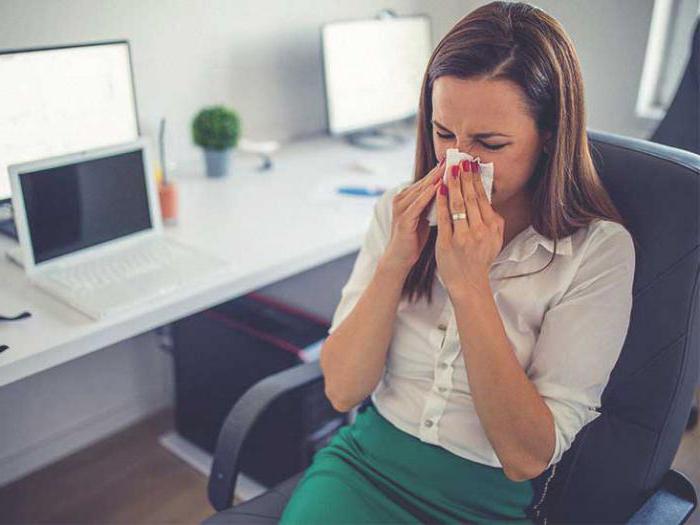
Of course, these manifestations in themselves are very unpleasant, but the consequences of untimely treatment can be terrible and sad. Dysfunctional changes occurring in the body lead to various types of diseases.
With frequent runny nose, polyps can form in the nose, and inflammation of the mucous tract will lead to asthma, which is a very difficult to cure disease.
Therefore, an allergy to house dust mites in a child is considered a kind of leap or transition to the fact that his body has begun to work incorrectly. As soon as the first symptoms of individual intolerance appear, immediate treatment should be started, otherwise other more dangerous diseases will develop.
Clinical picture
Allergies to dust mites, dust and pollen are accompanied by the following symptoms:
- the mucous membranes of the nasal passages and larynx swell;
- babies exhibit a cough reflex;
- the child sneezes, but there is no mucus discharge characteristic of a runny nose;
- the nasal passages itch, there is copious discharge of liquid transparent mucus;
- the conjunctiva of the eyes turns red, lacrimation, temporary decreased vision, and itching are noted;
- with hay fever, colloquially “hay fever,” the temperature occasionally rises to 39 °C;
- eczema-type rashes appear on the skin.

Characteristic rashes appear on the skin
If the body reacts strongly, an allergy to dust in a child can lead to Quincke's edema.
Is there a method to determine whether you are allergic to house dust or outdoor pollen? There is such a way. For example, during the flowering period, allergies to birch pollen in children will not decrease if they temporarily change their place of residence.
Symptoms of a negative reaction to dust may disappear if you take your child out into nature for just a couple of days. Another fact is that the largest amount of pollen falls from plants in the morning, which is why symptoms appear at this time.
Causes of allergies
Many factors influence the appearance of this disease. They are divided into three groups: external, immunological and psychophysical. The first is the presence of this parasite in the human living space itself. Usually dust and dirt accumulate there, in secluded places where the housewife rarely looks and cleans.
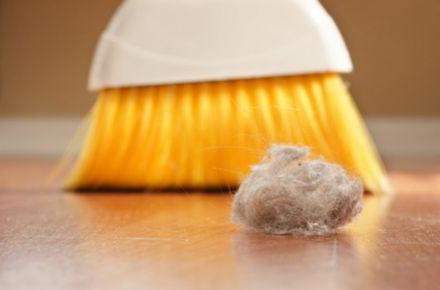
For example, on the shelves where books are placed, a damp cloth does not often come into contact. Dust accumulates here for a very long time. Soft toys are also a source of individual intolerance. They should be washed and cared for properly. Pillows that are many years old, passed down to us from grandparents, most often remain the same as they were before. And they should be processed frequently. Clothing that hasn't been worn in a long time and shoes that haven't been touched for several years can cause allergies to dust and mites.
Immunological signs of individual intolerance
The human body's defense system is designed to protect it from all kinds of harmful microorganisms and bacteria. As a rule, with this type the main reason is a sharp decrease in immunity. A situation arises when a person himself stops paying attention to his health.
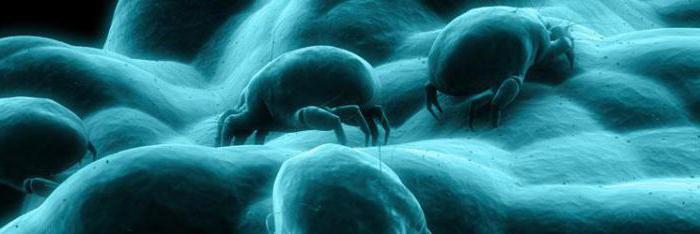
Very often, a loss of strength is observed in the spring season. And some people are allergic to pollen. Due to this factor, immunity decreases.
Psychophysical causes of an allergic reaction
This condition of any person has a certain significance in resisting various diseases. Allergies to dust and mites are also no exception. A person who has recently experienced stress or is emotionally depressed will experience this illness worse. At this moment, his immune system controls the process extremely poorly. For example, there were situations when a person seemed to have an allergy to dust and mites, the signs all corresponded, but in the room in which he was located there were no such parasites.
This happens due to strong emotions. Usually, people who have a bad attitude towards any item, even after it has been thoroughly cleaned, develop an individual intolerance to it. In this situation, with allergies to dust and mites, the symptoms cannot be treated with antihistamines. Here the main emphasis should be on examining the central nervous system.
Read more about dust mites
The house dust mite is a cosmopolitan species that lives in human homes. The parasites feed on organic detritus, such as dead human skin cells, and multiply abundantly in the warmth of the home.
Mites are a common cause of asthma and allergic symptoms in people and pets around the world. The tick gut contains potent digestive enzymes, in particular protease, which is stored in their feces and is the main stimulator of allergic reactions. Also, the exoskeleton of a tick can contribute to the manifestation of allergies.
The European - Dermatophagoides pteronyssinus and the American - Dermatophagoides farinae species are two different living creatures, but their distribution is not necessarily limited to Europe or North America - there are plenty of them on any continent, and they were named so because they were found for the first time, respectively, in Europe and America. A third species, Euroglyphus maynei, is also widespread. Unlike scabies mites or demodicosis, dust mites do not burrow under the skin and are not parasitic.
Despite their small size, people with good eyesight can see these parasites. However, due to their very small size and translucent bodies, mites are barely visible to the naked eye.
A typical dust mite measures 0.2-0.3 mm in length. At least 10x magnification is required for accurate identification. The body of a dust mite has a striated cuticle.
The average life cycle for male ticks ranges from 10 to 19 days. An adult female lays 60 to 100 eggs, but only during the last 5 weeks of her life. The total lifespan of a dust mite is 10 weeks, during which time the mite will produce approximately 2,000 fecal particles and an even larger number of partially digested enzyme products covered in dust.
Dust mites prefer bedrooms and kitchens as their habitat. Parasites survive well in mattresses, carpets, furniture and bedding. Their number, with sufficient infestation, is 100-500 mites per 1 g of dust. Although parasites prefer wetter conditions, even in dry microclimates, mites survive and reproduce easily in carpets and bedding (especially pillows), taking moisture from body contact.
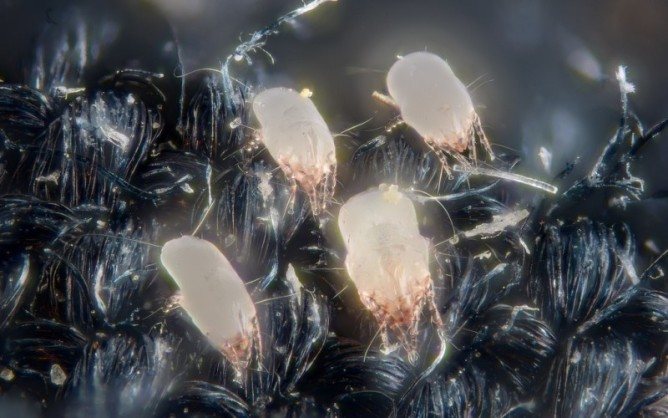
What are the allergens?
The main source of individual intolerance is the tick, but besides it, there are other causative agents of this disease. You can also be allergic to the fur of your pets: not only cats and dogs, but also hamsters. It seems that the remains of cockroaches, almost invisible to the eye, can make even a large person sneeze and break out in a rash.
If a child is allergic to dust and mites suddenly, think about it: you probably changed or brought something into the house not so long ago. For example, a regular down pillow can cause this disease.
Small microorganisms live in books, namely in the dust that forms on them, causing constant sneezing and runny nose.
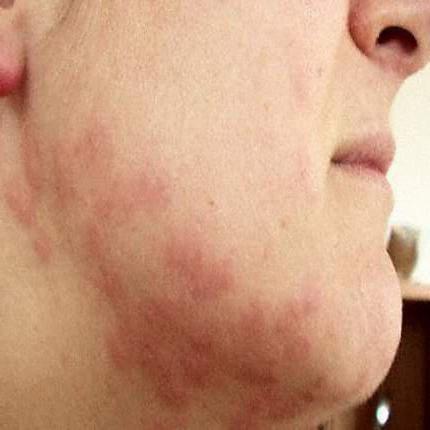
If there is dampness in the apartment you live in, then rest assured that mold will soon appear. Many people develop an individual intolerance to it.
House dust mite allergy: symptoms of the disease
Many types of individual intolerance are very similar to each other. In this case, diagnosing the disease is difficult. A thorough examination will be required.
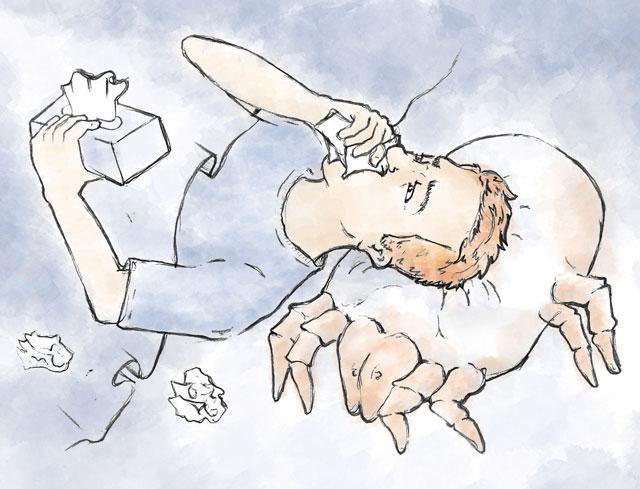
Here are a number of signs characteristic of individual intolerance to dust:
- A runny nose, this phenomenon can last a very long time, and is also accompanied by sneezing. A large amount of mucus accumulates in the nose.
- The eyes become red and there is profuse lacrimation. If measures are not taken in this situation, conjunctivitis develops.
- Inflammation of the mucous membrane. Due to the fact that this phenomenon occurs in the respiratory tract, a cough is formed.
- Swelling of the bronchi, leading to suffocation or Quincke's edema.
How is the allergen removed?
In general, it is impossible to make dust mites disappear. But other allergens are removed.

What actions are needed for this? For example, if you have an individual intolerance to down, you should get rid of all such pillows and purchase ones with synthetic filler. If your child is allergic to animal fur, you will have to sacrifice them, give them to your very good friends or relatives. And cover the shelves containing books and magazines with glass. An apartment with mold is treated.
Among other things, do not forget that good cleaning using special products is absolutely necessary.
Treatment of bed mite allergy
The first option: medication.
After the immunologist gives a positive answer that you have a similar allergy, you will be prescribed special medications. Such medications will necessarily contain antihistamines, corticosteroids and nasal substances. Also, the doctor may well offer you injection treatment. You will undergo a procedure called Hyposensitization. During this “healing”, a subcutaneous injection containing a small amount of allergens will be administered. They will cause addiction to the provocateur, the production of bodies in the body that fight it. As for medications, the most affordable and effective are:
- The drug "Erius". Use is permitted from one day, which allows young mothers to treat their baby. Relieves complications from the respiratory tract. Available in the form of syrup and tablets.
- The drug "Aquamaris". Even attributed to infants. It has a convenient form in the form of drops and spray. Clears the sinuses from the accumulation of allergens.
- The drug "Telfast". Relieves most symptoms of allergic reactions. Release is permitted in tablet form. It is recommended to use only from the age of six, not earlier.
Second option: traditional medicine.
As for this method of treatment, everything is simple. To gradually “heal” the body and get rid of provocateurs, you just need to rinse your nostrils with a special solution, which is prepared on the basis of salt and ordinary water.
It is recommended to do this procedure every two or three hours. Take half a teaspoon of salt (you can use sea salt) and dissolve it in a glass of water. That's all! And now, the time has come for auxiliary and very useful rules that will help get rid of and reduce the risk of complications of bed mite allergy.
So:
- Bed sheets. It is clear that this place is the first and most important place when allergens multiply. Change your underwear as often as possible.
- Carry out washing at a temperature of at least sixty degrees, otherwise you will not kill the ticks that are already there.
- You can use special additives based on acaricidal materials.
- Replace feather pillows and blankets, wool bedspreads and furniture throws with less allergenic materials. There are quite a large number of them on the market.
- Dry and air bedding more often. Try not to lie on a pillow with wet hair; getting it wet will encourage mites to multiply even more.
- Do not allow pets on the bed, as they are excellent carriers of these allergens.
- Ventilate the bedroom, the more often the better.
- Install air filters. Similar air purifiers that minimize the number of mite particles in the air.
- Do wet cleaning of rooms daily.
Allergy to dust, mites: how to treat?
There are several methods of complex therapy for getting rid of individual intolerance. Usually medications are prescribed or folk remedies are used. In addition, immunotherapy is also used in this situation. The last method of treating the disease is that the same allergen is introduced into the human body, but in a very small dosage. It is gradually increased.
This method is very effective, since the body gets used to dust and mites, and in the future does not react so sharply to irritants.
Allergen d2 - house dust mite Dermatophagoides farinae, IgE (ImmunoCAP)
Quantitative determination in the blood of specific antibodies, class E immunoglobulins, that appear in the presence of an allergic reaction to the house dust mite Dermatophagoides farinae.
Synonyms Russian
Specific immunoglobulin class E to the house dust mite Dermatophagoides farinae.
English synonyms
Specific immunoglobulin E to the house dust mite Dermatophagoides farinae, Spec. IgE to the house dust mite Dermatophagoides farinae (serum).
Research method
Immunofluorescence reaction on a three-dimensional porous solid phase, IFL (ImmunoCAP).
Units
kUA/l (kilounit of allergen per liter).
What biomaterial can be used for research?
Venous or capillary blood.
How to properly prepare for research?
- Do not smoke for 30 minutes before the test.
General information about the study
An allergen is a substance that causes an allergic reaction. There are a huge number of substances of natural or artificial origin, each of which can become an allergen for humans.
The main participant in an immediate allergic reaction (type 1) is immunoglobulin E (IgE). For each allergen there is a specific immunoglobulin E. The purpose of this test is to determine the allergic reaction to the house dust mite Dermatophagoides farinae.
House dust mites are one of the most common causes of bronchial asthma, allergic rhinitis and conjunctivitis, and atopic dermatitis. They can be found in mattresses, carpets, etc. As a rule, they feed on dead skin particles that a person loses daily. The waste products of ticks are digestive enzymes: Derf1 and Derp1 proteins, which contribute to the destruction of human skin cells on which ticks feed.
The main allergens of house dust are mites of the family Pyroglyphidae. This includes the mite Dermatophagoides farinae, the presence of an allergic reaction to which is detected by this test.
These substances enter the body through inhalation, through increased concentrations of dust in the air or through contact with products that may contain an allergen (clothing, pillows, blankets, etc.). The following allergy symptoms are likely: redness (hyperemia), skin rashes, itching, swelling and swelling of the skin, redness and burning of the mucous membranes of the eyes, lacrimation, swelling of the eyelids, sneezing, coughing, shortness of breath, bronchospasm.
Performing this study is safe for the patient compared to skin tests (in vivo), as it eliminates contact with the allergen. In addition, taking antihistamines and age characteristics do not affect the quality and accuracy of the analysis.
The use of tests for the quantitative determination of specific IgE antibodies allows us to assess the relationship between the level of antibodies and the clinical manifestations of allergies. Low levels indicate a low likelihood of allergic disease, while high levels are associated with clinical manifestations of the disease. By detecting high levels of specific IgE, it is possible to predict the development of allergies in the future and a more pronounced manifestation of its symptoms. However, the concentration of IgE in the blood is unstable. It changes with the development of the disease, with the amount of allergen dose received, as well as during treatment. It is recommended to repeat the study if symptoms change and treatment is monitored. You should consult your doctor about the need for re-examination.
ImmunoCAP is characterized by high accuracy and specificity: even very low concentrations of IgE antibodies are detected in a small amount of blood. The study is revolutionary and is based on the immunofluorescence method, which allows it to increase sensitivity several times compared to other tests. The World Health Organization and the World Allergy Organization recognize the ImmunoCAP diagnosis as the “gold standard”, as it has proven its accuracy and consistency in independent studies. In the Russian Federation, until now, the technique has not become widespread, although throughout the world up to 80% of tests for specific class E immunoglobulins are performed using ImmunoCAP.
Thus, identifying specific IgE using this technique takes allergy diagnostics to a qualitatively new level.
What is the research used for?
- For the diagnosis of allergic diseases (bronchial asthma, allergic rhinitis, respiratory allergosis).
- To assess the risk of developing allergic reactions to the house dust mite Dermatophagoides farinae.
When is the study scheduled?
- If you have the following symptoms indicating an allergic nature: redness and burning of the mucous membrane of the eyes, lacrimation and swelling of the eyelids, nasal congestion, sneezing, coughing, shortness of breath, bronchospasm.
- Children - if their parents suffer from allergic diseases, including those manifested by contact with house dust (house dust mites Dermatophagoides farinae).
- With a continuously relapsing course of respiratory diseases without periods of remission.
- With the polyvalent nature of sensitization, when it is not possible to conduct in vivo testing with suspected allergens.
- In case of a false positive or false negative result of skin testing.
What do the results mean?
Reference values
| The value of the indicator, kUA/l | Class | IgE antibodies |
| 0 — 0,35 | 0 | Absent |
| 0,351 — 0,69 | 1 | Short |
| 0,70 — 3,49 | 2 | Average |
| 3,5 — 17,49 | 3 | High |
| 17,5 — 49,99 | 4 | Very tall |
| 50,0 — 100,0 | 5 | Intensely high |
| More than 100.0 | 6 | Extremely high |
Reasons for increased levels of specific IgE:
- the presence of allergic reactions to house dust (house dust mites Dermatophagoides farinae and Dermatophagoides pteronyssinus);
- bronchial asthma, allergic rhinitis, allergic conjunctivitis and atopic dermatitis caused by sensitization to house dust (house dust mites Dermatophagoides farinae and Dermatophagoides pteronyssinus).
Reasons for decreased levels of specific IgE
With repeated research (over time), the level of specific IgE may decrease for the following reasons:
- limiting or eliminating contact with the allergen;
- carrying out drug treatment.
Cross reactions
Cross reactions are allergic reactions to components of the same structure present in different allergens. To avoid unreasonable performance of unnecessary tests for the patient and individual selection of possible cross-reacting allergens, consultation with an allergist is necessary.
Also recommended
- Fadiatope (ImmunoCAP)
- Fadiatope for children (ImmunoCAP)
- Total immunoglobulin E (IgE) in serum
- Allergen h1 - house dust (Greer), IgE (ImmunoCAP)
- Allergen h2 - house dust (Hollister), IgE (ImmunoCAP)
- Determination of specific immunoglobulins class E to animal allergens
- Determination of specific immunoglobulins class E to mold allergens
- Determination of specific immunoglobulins class E to food allergens
- Determination of specific immunoglobulins class E to other allergens
- Complete blood count (without leukocyte formula and ESR)
- Leukocyte formula
- Erythrocyte sedimentation rate (ESR)
Who orders the study?
Allergist, pediatrician, pulmonologist, gastroenterologist, therapist, general practitioner, rheumatologist.
Literature
- Pittner G, Vrtala S, Thomas WR, Weghofer M, Kundi M, Horak F, Kraft D, Valenta R. Component-resolved diagnosis of house-dust mite allergy with purified natural and recombinant mite allergens. Clin Exp Allergy 2004;34(4):597-603.
- Thomas WR, Smith WA, Hales BJ, Mills KL and O'Brien RM. Characterization and Immunobiology of House Dust Mite Allergens. Int Arch Allergy Immunol 2002;129:1-18.
- Yasueda H, Mita H, Yui Y, Shida T. Comparative analysis of physicochemical and immunochemical properties of the two major allergens from Dermatophagoides pteronyssinus and the corresponding allergens from Dermatophagoides farinae. Int Arch Allergy Appl Immunol 1989;88(4):402-7.
What does traditional medicine offer for individual intolerance?
Most people with this illness have a question: if they are allergic to dust and mites, how to treat it? What to do in this situation? The patient's body contains histamine. It is he who is responsible for allergen outbreaks. In order to suppress it, a specialist prescribes antihistamines.
As a rule, from this medicine the patient becomes lethargic and drowsy. This phenomenon is explained by a side effect of the medication. Sometimes the doctor offers the patient other methods of treatment for an allergic reaction.
The occurrence of an allergic reaction
The peak of allergies often occurs during cold weather - autumn and winter.
The dermatophagoid mite, or dust mite, lives indoors; people do not react to its existence in any way. But it happens that an allergic reaction occurs.
The reasons are:
- bronchial asthma of various etiologies;
- genetic predisposition;
- elderly people and young children.
A frequent peak in the occurrence of allergies is the period of cold weather - autumn and winter. This is due to infrequent ventilation and insufficient circulation of air masses in the room. In such cases, mites and their metabolic products accumulate in the premises.
The causative agent of the allergic reaction is a microorganism and its size does not exceed 0.5 mm. To view it, you need to use a microscope with 40x magnification. It is the feces that dust mites produce during their metabolism that contain toxic substances that cause allergies.
One individual dust mite lives no more than 2 months; during this period of time, the microorganism is capable of producing waste that exceeds its own weight by 20 times. One female lays up to 60 eggs in one visit. Ticks feed on dead particles of the epidermis of humans and pets. This causes them to accumulate where there are the most places for feeding.
One gram of dust can contain from 10 to 10 thousand mites. Together with the dust, the toxic waste products of the mite rise into the air, and then land on the mucous membranes of the respiratory system and human skin. This becomes the beginning of a specific allergic reaction.
Dermatophagoid mites settle where the room temperature is from 18 to 27 degrees and the air humidity is more than 75%. This type of conditions is considered comfortable for ticks.
Dust mites are kept in a person's bed, where there is a rich place for microorganisms to feed. They love to settle and live in mattresses, feather pillows, feather beds, because it is always warm and humid there. It can live in soft toys, sofas, upholstered chairs, carpets and clothing. There are species whose favorite places are books and other types of paper accumulations.
What folk methods exist?
One of the effective ways to treat individual intolerance is to rinse the nose with an aqueous solution containing salt and soda. The procedure should be performed every 3 hours. A saline solution will also help if there is no soda.
You can also do simple inhalations using water vapor. They relieve swelling of the mucous membranes very well. This procedure is similar to a bath. Here the patient must inhale the vapors.
When treating with traditional methods using medicinal plants, you must be attentive and careful, since the decoction may not be suitable for a person, then an attack will occur. In this case, it is advised to drink a small amount of the drink, and if after a certain amount of time there is no reaction, then take it.
Air conditioning at home is also a great treatment option. It is used to ionize the air with negatively charged particles.
In addition to all of the methods listed, you must follow a diet, which is usually prescribed by a specialist. A person should exclude chocolate and coffee, as well as corn, from his diet.
How to carry out prevention?
To avoid health problems and dust allergies, you should follow a few simple tips. The living room or apartment should be ventilated as often as possible.
Thorough cleaning should be done preferably every day. You should use not only a vacuum cleaner, but also a damp cloth with special detergents.
Bed linen should be changed once a week, not a month. Then the risk of getting allergies will be less.
There should be no carpets or rugs in the house at all. They are the source of carriers of all kinds of parasites and harmful microorganisms.
If mold suddenly appears on the wall or ceiling in your apartment, get rid of it immediately. Special products are sold to combat them. It is known that children who live in a house with mold and mildew are more likely to suffer from respiratory diseases. Take care of the health of your family and yourself in advance. And then you will not have to be treated for dust mite allergies.
Signs of a dust mite allergy
The presence of a tick in an apartment most often manifests itself as allergic rhinitis. Symptoms of illness include:
- repeated sneezing;
- copious liquid discharge from the nasal cavity;
- redness of the eyes and watery eyes;
- difficulty breathing.
In infants, the symptoms of dust mite allergy are more pronounced.
Swelling of the mucous membrane quickly develops, nasal congestion and severe runny nose appear. The child cannot eat normally and refuses to breastfeed, constantly cries and is capricious. These symptoms include loss of appetite and insomnia. In addition to allergic rhinitis, dust mites can provoke bronchial asthma, dermatitis or conjunctivitis. In this case, the following signs of a pathological condition will be added to the manifestations of a runny nose:
- photophobia, itching and pain in the eyes;
- skin rash located on the face and neck, in the groin area, armpits or elbow and knee joints;
- inspiratory shortness of breath, wheezing when breathing, cough with sputum discharge.
Attention. In rare cases, an allergy to mites is accompanied by angioedema. If your face becomes enlarged and signs of suffocation appear, you must call an ambulance.
If the cause of the illness is indeed a dust mite, then the allergic reaction will be accompanied by some features:
- the disappearance of all symptoms of illness outside the home;
- exacerbation of signs of rhinitis or asthma during sleep and cleaning the room;
- seasonality of relapses associated with the period of active reproduction of unpleasant neighbors and the cold season;
- concomitant reaction to down and feathers.
Most often, children suffer from dust mite allergies. This is due to the weakness of the child’s immune system and more frequent contact with arthropods. After all, children are constantly crawling on the floor and having fun with soft toys.
